Top 13 Most Beautiful Historical Sites in Majorca
Majorca is a beautiful island located in the Balearic Islands in the Mediterranean Sea. It is a famous tourist destination because of its beautiful natural ... read more...scenery and luxurious travel services. Majorca is known as a party paradise that attracts many celebrities and tourists to resort. Besides, the historical sites are also a special element of this island. Let's find out with Toplist the most beautiful historical sites in Majorca!
-
The first position on the list of the most beautiful historical sites in Majorca is the Alcudia city walls, which are in excellent shape and have the extra charm of containing an extremely beautiful medieval core inside with buildings from the 13th century.
Alcudia's location made it vulnerable to numerous maritime threats. In the fourteenth century, King James II gave the order to construct impressive defenses with a perimeter more than one kilometer long and six meters high. Three access doors—the Porta del Moll, Porta de Mallorca, and la Porta de la Vila Roja—as well as 26 watchtowers from the original Medieval Muralla of Alcdia, have been preserved. These were strategically positioned to protect the city from attack by pirates and privateers coming from the north of the island. Later, following a number of prolonged assaults, they began to add new parts to the structure. Part of the new wall was damaged in the nineteenth century, and in 1974 it was determined that it should be protected by the Conjunto Histórico Artsticoto.
Taking the Street "Cami de Ronda" behind the highest external wall or battlement and walking along the parapet walk, you can now walk around the walls in less than an hour while taking in the views of the La Victoria Peninsula on the right. On Tuesdays and Saturdays, a market is also open near the Porta del Moll o de Xara gate, which connected Alcudia to the harbor in the eighteenth century.
Location: Alcudia, Balearic Islands, Spain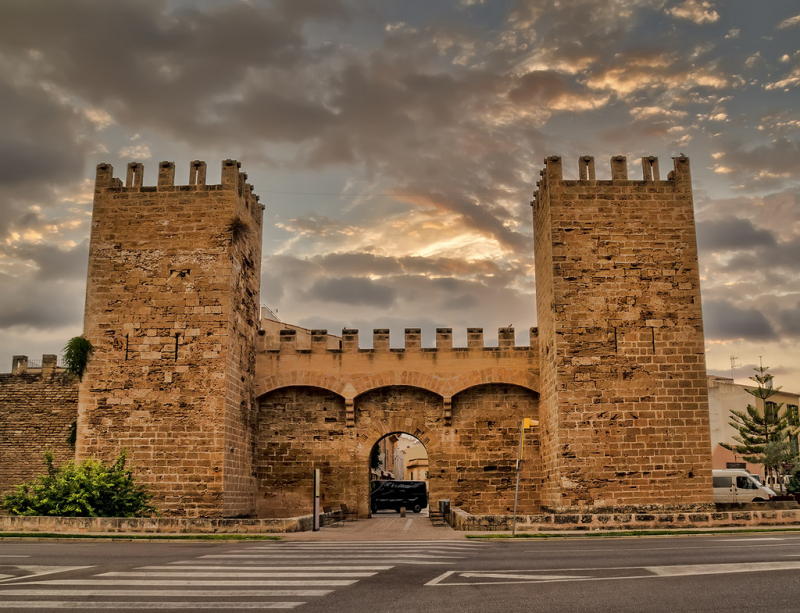
Photo: flickr.com 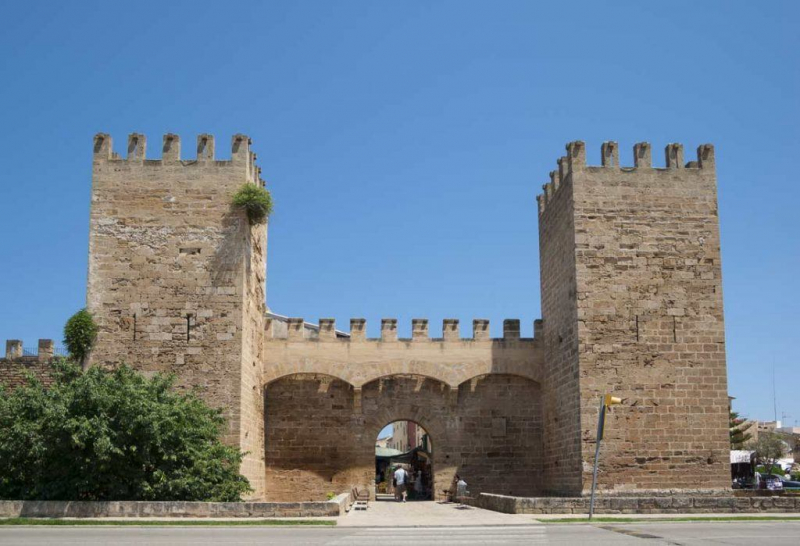
Photo: tripkays.com -
On the island of Majorca in the Balearic Islands of Spain, 3 kilometers to the west of Palma, is Bellver Castle, a Gothic-style castle. It is one of the few circular fortresses in Europe and was constructed in the 14th century for King James II of Majorca. It was once the home of the Kings of Majorca and was later extensively utilized as a military jail from the 18th to the middle of the 20th century. Today, it is a major tourist destination on the island and houses the city's history museum.
It was built to serve as the residence for James of Mallorca's royal court, and its design mixes palace requirements with defensive features. The most distinctive aspect of its building is its peculiarly round form in Mallorca. The three little towers, the donjon, and the inner yard are all of the same shapes as the surrounding wall. The castle's donjon is surrounded by a moat.
The Museu d'Historia de la Ciutat, which is located in Castell de Bellver, is the city's history museum and features artifacts dating from ancient Roman times to the 17th century. You can explore a number of deserted rooms upstairs, including one that was formerly a kitchen. You can witness the prisoners' graffiti inscribed onto the walls as well as breathtaking views of the woods, Palma, the Badia de Palma, and the ocean from the summit.
Location: Palma, Balearic Islands, Spain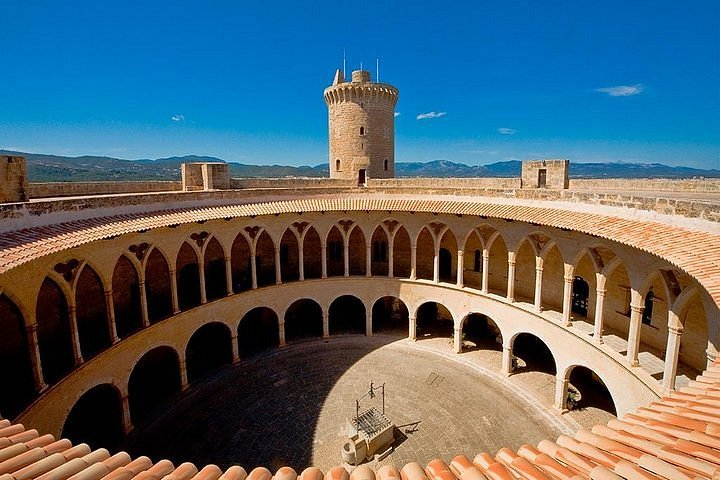
Photo: tripadvisor.com video: https://www.youtube.com/watch?v=qxJV19UYVgc -
The huge La Seu cathedral is a seaside landmark that took many centuries to complete. After the Moorish dominion of the Mediterranean island had ended, King Jaume I of Mallorca gave the order to start construction in the early 1230s. The enormous cathedral is built upon the ruins of a former mosque. The main portal and nave took more than 350 years to complete, and the building wasn't finished until 1601.
When you pause to look at La Seu, the enormous size of the church structure is apparent. The structure is 33 meters wide and over 110 meters long. The nave is one of the biggest of its sort in Europe, standing 44 meters high. The Gothic rosette window on the church's eastern façade is a notable design element. With a circumference of 12.55 m, it is made up of more than 1,200 pieces of vibrant glass. The interior of the building is filled with amazing, kaleidoscopic reflections as the sun shines through the window.
The gothic rosette window's ability to let light in is stunning, but on specific days of the year, guests may look forward to an astonishing light show. The "Light Game of the Eight" takes place twice a year on February 2nd and November 11th. The circular window's precise reflection is projected onto the opposite wall below the rosette of the main façade as the sunbeams pass through the huge rosette on the eastern front at 8:00 am. The two rosette windows seem to have been precisely superimposed on one another to the beholder. Thousands of tourists come to see this magical moment each year.
Location: 07001 Palma, Illes Balears, Spain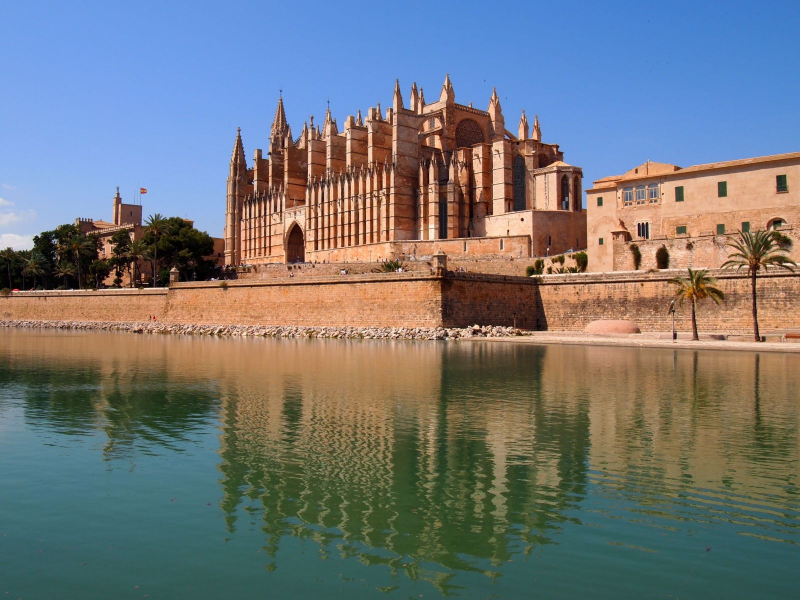
Photo: wikipedia 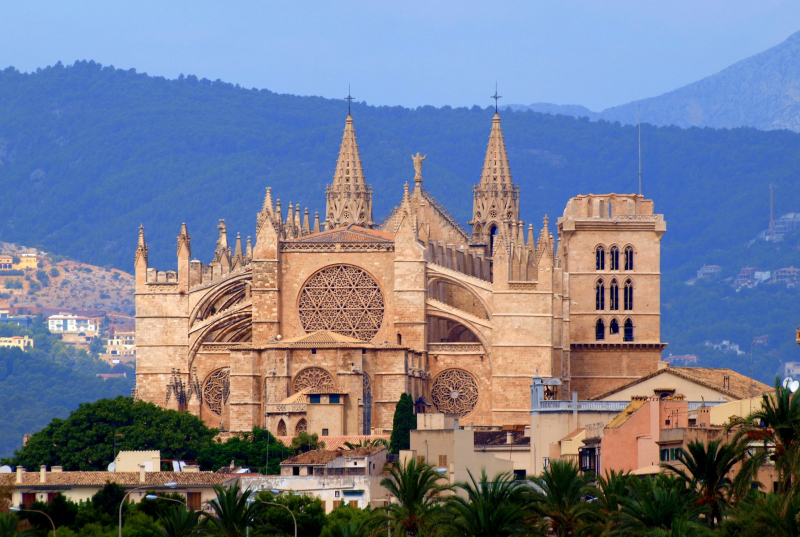
Photo: mallorca-spotlight.com -
The next position on the list of the most beautiful historical sites in Majorda is the Valldemossa Charterhouse which is a palace in Valldemossa, Mallorca, that served as the previous royal residence and Royal Charterhouse of King Sancho of Majorca.
The complex's history may be traced back to King James II of Majorca, who built the "Palace of King Sancho" for his son Sancho in this remarkable location in the Sierra de Tramuntana, which is more than 400 meters high. Martin of Aragon gave the Carthusian monks access to all of Valldemossa's royal possessions in the year 1399. One of Mallorca's patron saints, Saint Catherine of Palma, was born there in 1533 and passed away there in 1574.
On top of the simple church established in 1446, construction on the church, a neoclassical structure embellished by famous painters and craftsmen of the period, started in 1751. The complex includes a cloister, the former library, audience room, dormitory, and the Prioral Cell-chapel, where the aesthetic and historical legacy of the Carthusians is preserved and demonstrates how the monks lived. It also features a garden. These were the ones who built the Charterhouse and lived there up until 1835 when Mendizábal's ecclesiastical confiscations caused it to fall into private hands.
Location: Plaça Cartoixa, s/n, 07170 Valldemossa, Illes Balears, Spain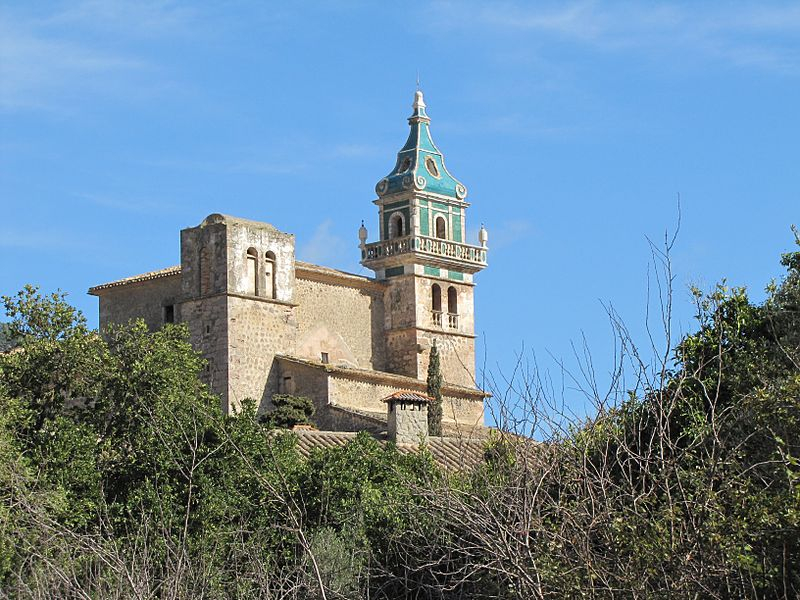
Photo: wikipedia 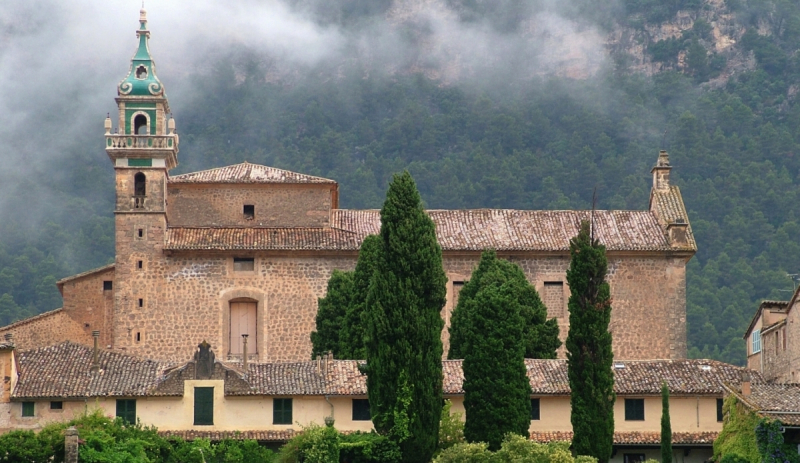
Photo: seemallorca -
On the northern outskirts of Ceuta's Medina district are the medium-sized medieval public baths known as the Arab Baths. It is believed that this has been inhabited since the eleventh century. Archaeological studies conducted in 2000 and 2004 revealed the baths had a single area for clothing and restrooms, followed by a cold bath and then a hot bath in the Roman tradition. There might have been other rooms.
The earliest occupation on this site in the Medina neighborhood of Ceuta's northern suburbs dates to the 11th century when remnants of a street and domestic structures were discovered. The two baths weren't constructed until the 12th and 13th centuries. Archaeological studies have revealed that the baths were designed in the manner established by the Romans, with one area for clothing and restrooms, followed by a cold bath and then a hot bath. There is evidence that additional rooms were once built, but these have since been gone, while some of the barrel vault ceilings have remained. The structure was expanded in the fourteenth century, but by the fifteenth century, its stones were being used in other construction projects.
The arched roofs may have formerly been coated with marble. In the seventeenth century, there was no need for structure. The baths were found while construction was being done on the street, and since then, excavations were conducted in 2000 and 2004. The public is welcome to view the remains. They look out of place on Ceuta's modern main avenue. In 2007, the baths were designated as a monument of national significance.
Location: P.º de la Marina Española, 51001 Ceuta, Spain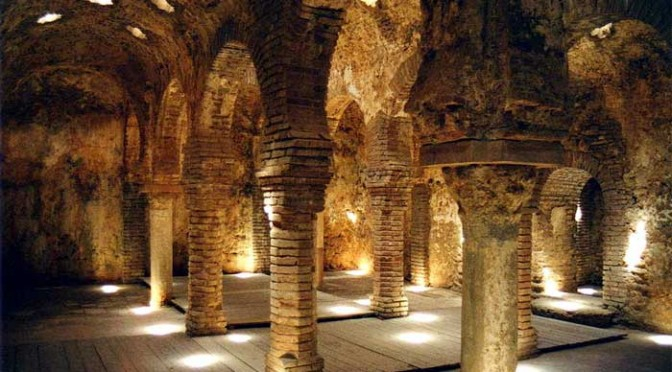
Photo: rondatoday.com 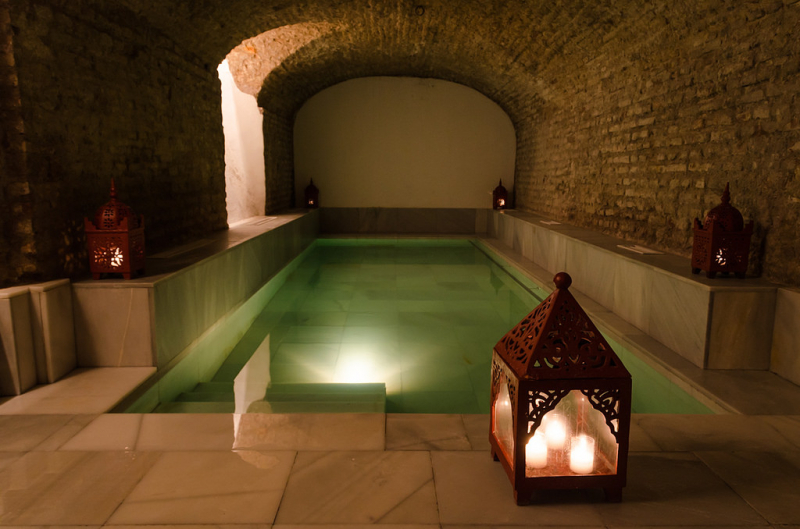
Photo: theculturetrip.com -
Only a few kilometers from Port de Pollensa lies Pollensa, an ancient town in the north of the island with charming tiny streets and a large main square surrounded by cafés, restaurants, and bars. Pollensa Old Town is one of the most beautiful historical sites in Majorca. The town has evidence of a lengthy history due to its several conquests over the years. Pollensa has been a popular destination for upscale travelers ever since a colony of artists, writers, and musicians moved there in the early 20th century after discovering the area's inspirational beauty.
The Talaiots, who came to this area more than 3,000 years ago, are the people who left the earliest traces on the surrounding terrain. On the boundaries of the little town, which currently has around 16,000 residents, are the best-known ones, which the Romans left behind in 123. The Torrent de Sant Jordi, which the resourceful Romans built to provide the town with water, is crossed by the ancient Roman bridge, El Pont Romà. Up until the Vandals attacked in 440, there was peace. However, the Vandals caused havoc and forced the survivors to evacuate inland.
There are several interesting locations to see in the town, such as the Roman bridge, Pont Roma, which is still in use, and the Puig de Pollensa, a tiny mountain outside the town that is topped by a monastery. Here, we provide you all the details you need to enjoy this laid-back yet culturally rewarding inland town to the fullest.
Location: Pollensa, Majorca, Spain
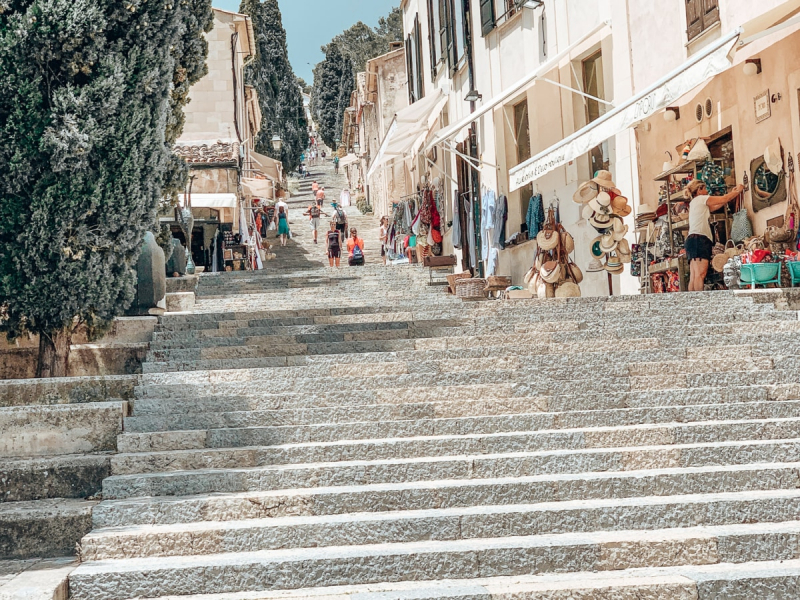
Photo: hetotraveler.com 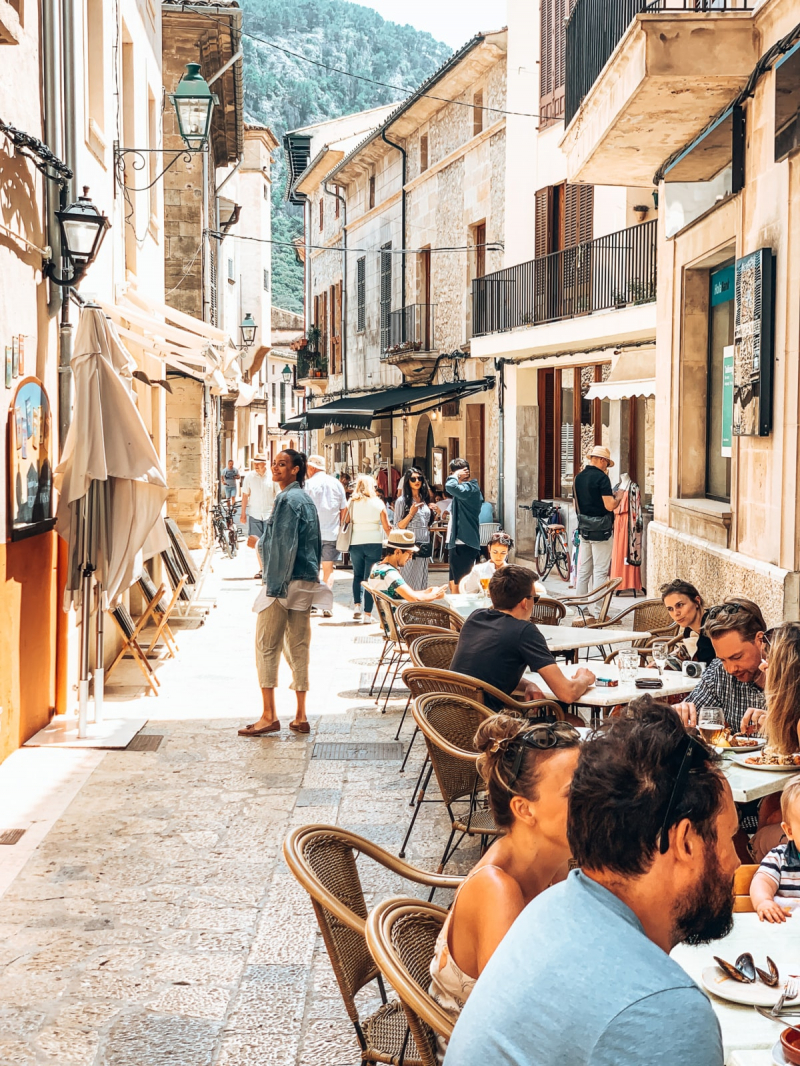
Photo: herotraveler.com -
The Drach caves are a group of four enormous caves that span a distance of about 4 kilometers and are situated on the Spanish island of Majorca in the Balearic Islands. They are located in the Manacor municipality, close to Porto Cristo. The first time they were mentioned was in a letter from 1338. The Black Cave, White Cave, Luis Salvador Cave, and Cave of the French are four interconnected caves.
Some academics believe the formation of the caves may date back to the Miocene Epoch. The caves were formed by water being forced through the entrance from the Mediterranean Sea. Martel Lake, an underground body of water with dimensions of roughly 115 meters by 30 meters and a depth range of four to twelve meters, is located in the caverns. It is named for the French explorer and scientist Édouard-Alfred Martel, who was invited to study the cave in 1896 and is regarded as the pioneer of speleology. While M.F. Will, a German cave explorer, had charted the White and Black cave in 1880, Martel discovered two additional tunnels in addition to the subterranean lake.
Guided tours of the caves are available for a fee, and occasionally they conclude with a classical concert that is rendered even more stunning by the extraordinary location and acoustics. Make sure to stop by Martel Lake, which is one of the largest underground lakes in the world, measuring more than 100 meters in length.
Location: Ctra. de les Coves, s/n, 07680 Porto Cristo, Illes Balears, Spain
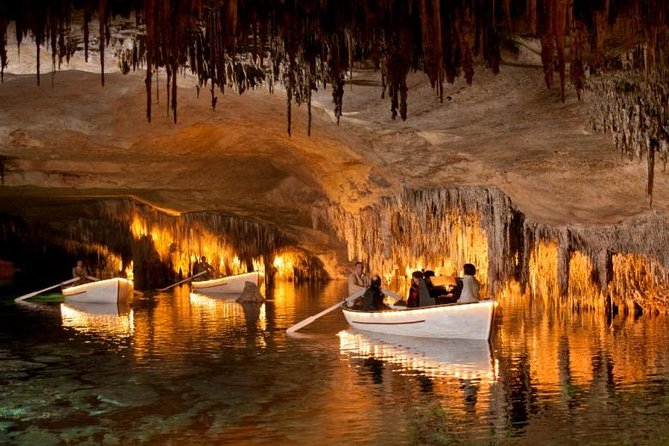
Photo: viator.com 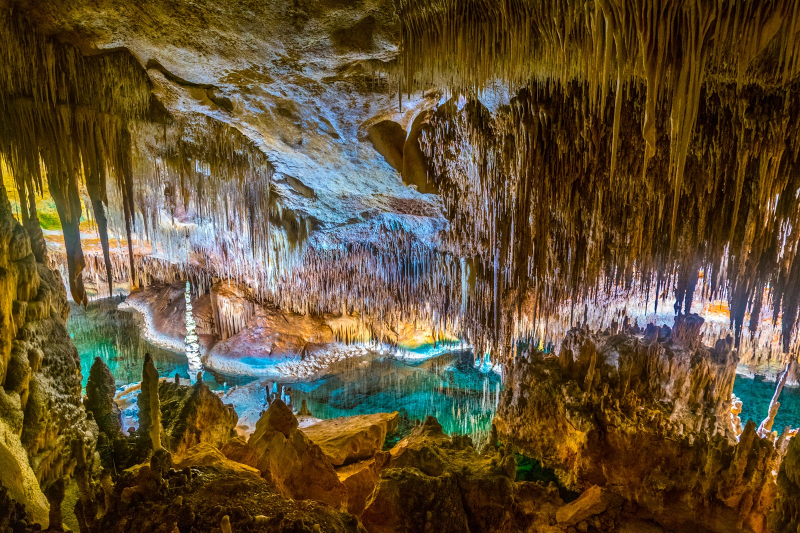
Photo: hotels.cn -
In the northwest of Mallorca, there is a typical "posesió" or rural estate called Son Marroig. It was once the home of Austria's Archduke Ludwig Salvator, who fell in love with the area's breathtaking natural surroundings. Few people are untouched by the view, and the landmark draws throngs of tourists all year long. Many people pass by to admire the amazing views from the vantage point, but for those who would like to extend their enjoyment, there is a restaurant and bar.
Both a charming medieval home and a working museum honoring the late Austrian Archduke, Ludwig Salvator, may be found in Son Marroig in Majorca. Salvator fell in love with the area and the entire island of Majorca, so he decided to buy the property in 1863 even though it was originally built in the 17th century. Salvator, who admired Majorca's nature and traditions, worked from Son Marroig to record, safeguard, and promote the island's heritage. Son Marroig eventually evolved into a Salvator museum.
The estate and museum are now open to visitors for a nominal fee. You can look at records pertaining to his research on the island and tour his former living and sleeping quarters. The grounds also have stunning views of the site's mountainous surroundings and the coastline. It is one of the most beautiful historical sites in Majorca.Location: Via Deià, Carretera de Valldemossa, s/n, 07179 Deià, Balearic Islands, Spain
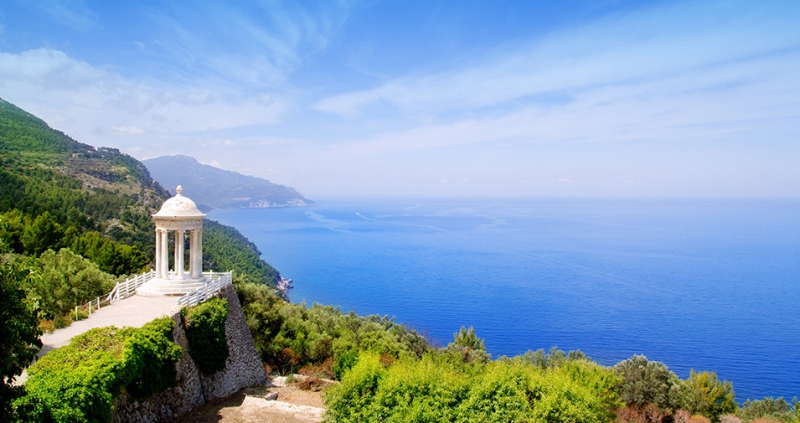
Photo: abc-mallorca.com Video: https://www.youtube.com/watch?v=BP35onOiu44 -
One of Majorca's only remaining specimens of Islamic architecture is seen at the Banys Arabs, often known as the "Arab Baths," in Palma. The Banys Arabs, who date to the eleventh century, were possibly a part of a wealthy Moorish resident's mansion. The two rooms of the last intact Arab baths are now shown to visitors of the Banys Arabs. It's interesting to note that some elements of the Banys Arabs are older than the actual location; for instance, some of the columns date back to the Roman Empire.
There are essentially no Arabs left in Medina Mayurqa's Arab city (now known as Palma). They were constructed using resources from former Muslim, Byzantine, and Roman structures and were inspired by their architectural designs. The baths are seamlessly incorporated into the gardens of the Can Fontirroig manor house's old orchard.
Today, tourists from all around the world appreciate the elaborate bathhouse remnants, where each column has a unique shape from its origins in several old Roman, Muslim, and Byzantine structures. Spend some time at the Can Fontitroig manor house's former orchard and consider the function that the baths would have served in the nobleman's home. It is common for locals and tourists to bring picnics to enjoy there.
Location: Palma, Balearic Islands, Spain
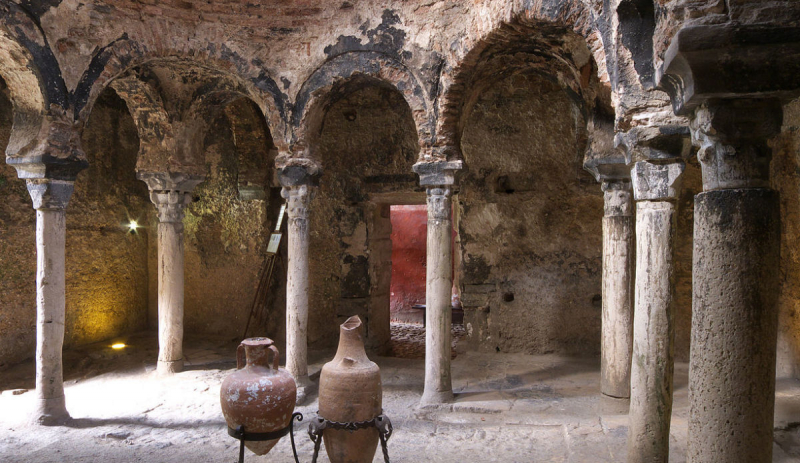
Photo: seemallorca.com 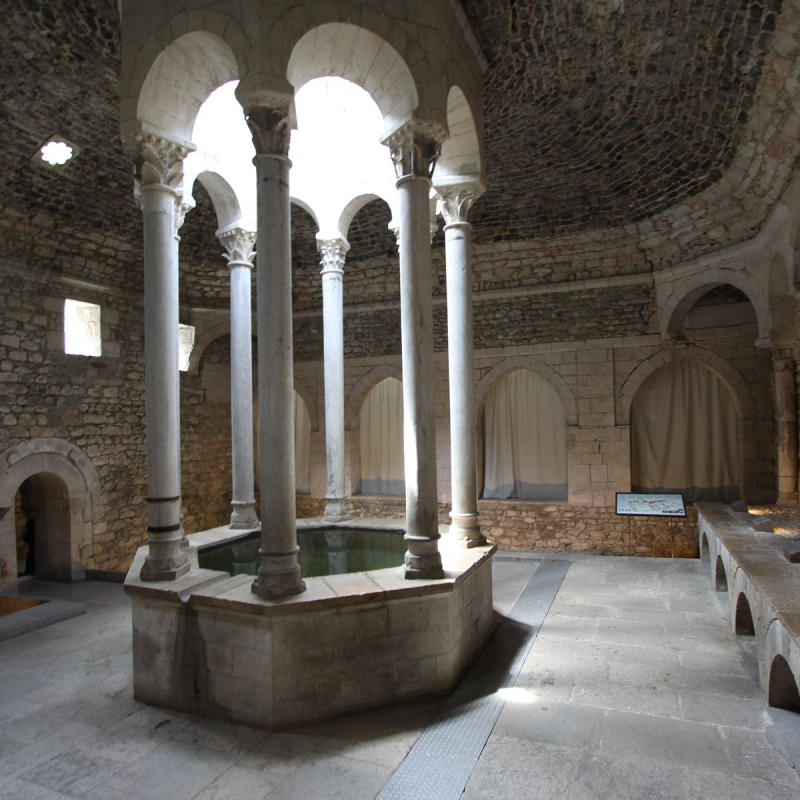
Photo: tripadvisor.com -
The Jardines de Alfabia complex, is situated near Buola (Majorca), at km 17 on the road from Palma to Sóller. They can be categorized as typical gardens for Mallorca, with Hispano-Arab roots, as they originate from old farms from the time when Muslims controlled the island. These farms were frequently set up on terraces and used to grow citrus and other fruit trees. During the Renaissance, these trees were acquired by noble families, who transformed them repeatedly to give them an air of wealth and luxury.
Following the Balearic Islands' conquest by Jaime I the Conqueror, the monarch entrusted the area to his uncle Nuo de Roussillon, who later sold it to the Ben-Abet family of Moors. After that, it changed hands numerous times before coming into the possession of the Zaforteza family, its present proprietors.
The family residence was constructed in the fifteenth century, and a rear wing and baroque façade were erected in the seventeenth and eighteenth centuries, respectively. A fountain with a sculpture of a little child and a fish may be found in the home's courtyard. The gardens are behind the structure and include a half-barrel-dome-covered cistern, a pergola with 72 columns, and 24 stone aquatic plants with alternate water jets. Orange trees are in an orange tree orchard as water cascades down the land's slope.Location: Carretera Palma-Sóller, km 17, 07110, Illes Balears, Spain
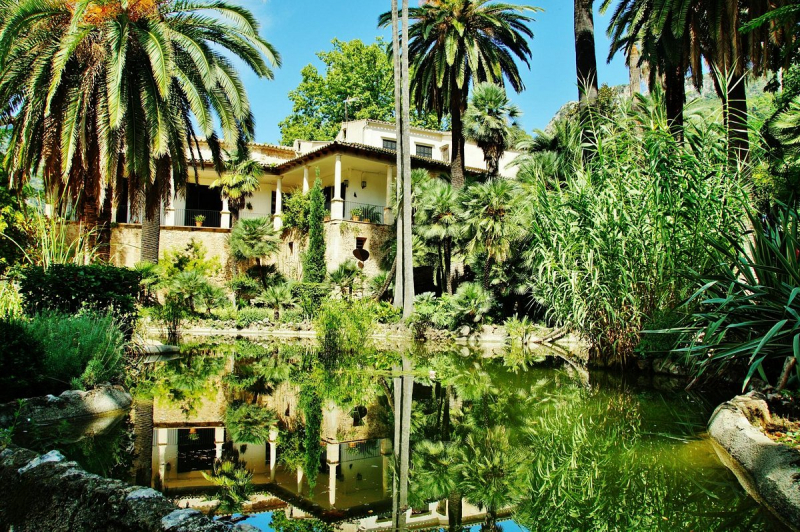
Photo: tripadvisor.com 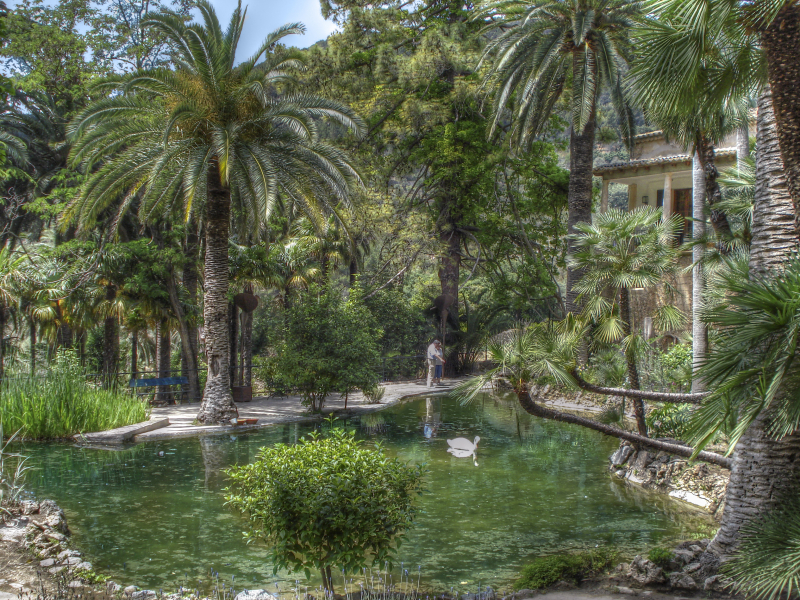
Photo: wikipedia -
A Muslim castle converted into a Majorcan palace is located in Palma and is called La Almudaina Royal Palace or Palau de l'Almudaina. It underwent a modification in 1281 and was then used by Majorcan kings. The Spanish king still makes La Almudaina Royal Palace his summer home.
Visitors can tour the entire palace, which includes the king's and queen's quarters, the royal church, and the striking gothic hall, as well as different exhibits inside La Almudaina Royal Palace, including a range of Flemish tapestries. The monarch and other members of the Spanish Royal Family have their official summer residence at La Almudaina Royal Palace.
Its several chambers are open for visitors to explore while they take in the many different architectural and historical influences. Three enormous rooms are connected by a series of bricked-in Gothic arches that formerly doubled the height and formed a large hall. These three rooms are decorated with tapestries and antique furniture.In the palace, there are six empty chambers. However, the royal apartments are located higher up the Royal Staircase and offer a glance at the opulent interior decor. The Pyrenean marble gateway of the Capilla de Santa Ana (Saint Anne Chapel), a unique specimen of the Romanesque architecture on the island, is notable. Outside are lovely gardens with swans. Along with being a museum, the palace houses the military command for the Balearic Islands.
Location: Palma, Balearic Islands, Spain
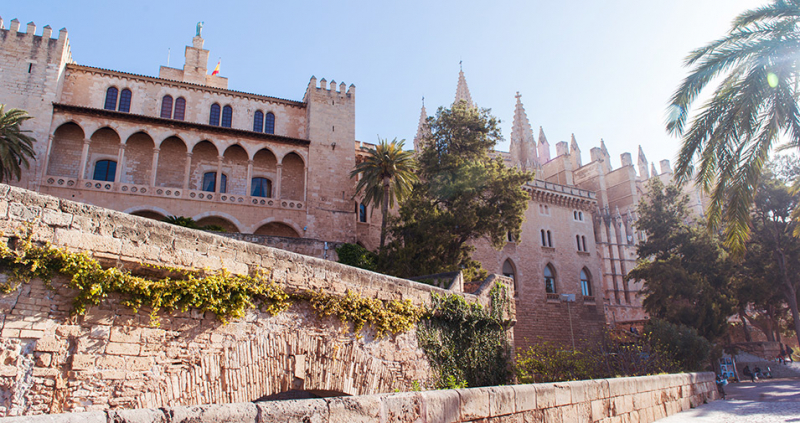
Photo: abc-mallorca.com Video: https://www.youtube.com/watch?v=TT6YawfnIV4 -
According to legend, Quintus Caecilius Metellus Balearicus established the Roman city of Pollentia in the area that is now Alcdia in the year 123 BC. However, the earliest known remains date to the early first century BC. As a result, it was determined through investigation that a military expedition might build a castra (military camp) that would subsequently give rise to the modern city of Pollentia.
It is thought that Pollentia was a Roman castra (camp) until around 70 BC, when, in accordance with the excavations in the forum area, the city's urbanism was restructured and monumentalized. Pollentia was one of the Roman settlements created by consul Metellus. A wealthy and flourishing city, Pollentia has a preserved area of about 16 hectares. Despite a severe fire that struck this region in the third century AD, the city was not completely destroyed because the construction of a fortification in the fifth century AD is recorded in the same forum.
The medieval Christian population eventually settled down a little further north, in the present-day town of Alcdia, leaving Pollentia mostly or entirely unpopulated in the succeeding years. In the 16th century, but particularly since the turn of the 20th century, Sa Portella, the city forum, the tabernacle, and the theater have seen the majority of excavations.
Location: Alcúdia, Majorca, Balearic Islands, Spain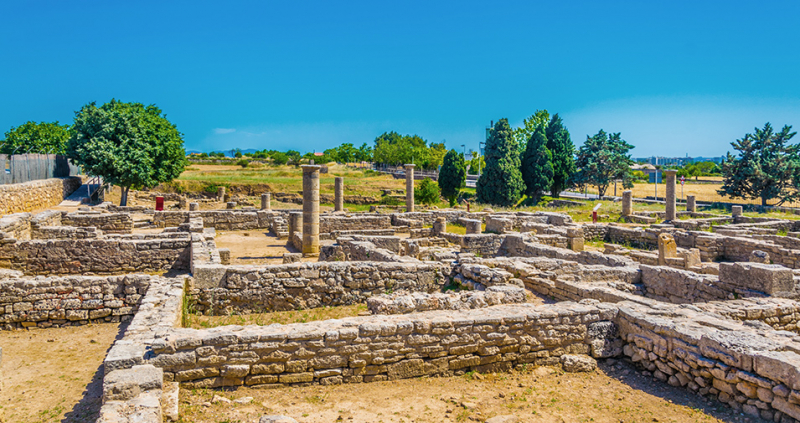
Photo: abc-mallorca.com 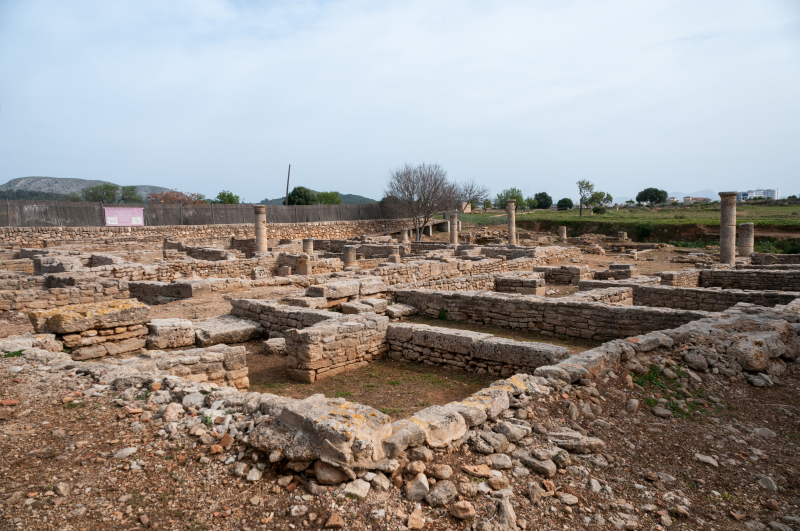
Photo: wikipedia -
Building the home in 1932, Robert Graves and his then-girlfriend Laura Riding gave it the Catalan name Ca n'Alluny, which translates to "The Far House" in English. The charming village of Deià is a five-minute stroll away. It has the Mediterranean in view and is backed by mountains.
When feasible, the home has been brought back to Graves' original condition from when he and his new family visited Mallorca in 1946. A few modifications were required, such as wheelchair accessibility, a small display area, and air conditioning. Even yet, the light fixtures, wall decor, and furniture are all original. The atmosphere from when Graves was at the height of his creativity is still present in the home. The visitor gets the impression that Graves either went to the village for the post or disappeared for a quick swim at the beach.
An essential component of the trip is the garden. The main paths have been surfaced to make them accessible to those with disabilities, but otherwise, it's pretty much the same as when the house was built. The land's olive, carob, and almond trees were left standing. For his marmalade, Graves planted an orange grove, a tangerine grove, some lemon plants, local fruit trees, and bitter orange trees. He retained the garden's sunny end as a Jardin potager. It is one of the most beautiful historical sites in Majorca
Location: Deia, Balearic Islands, Spain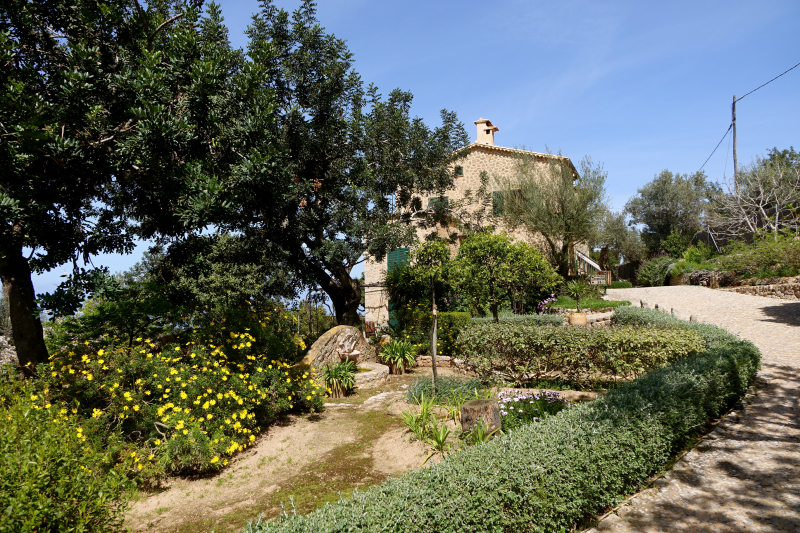
Photo: daily-norm.com 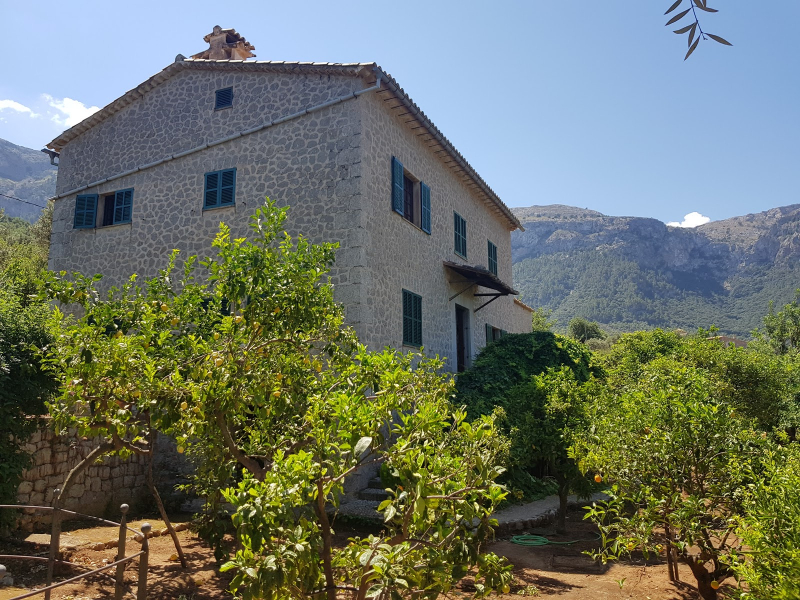
Photo: travelcoffeehot.com


































